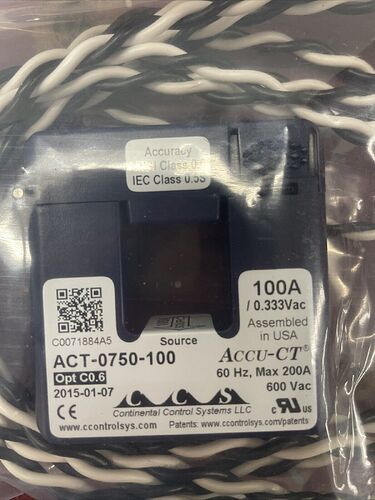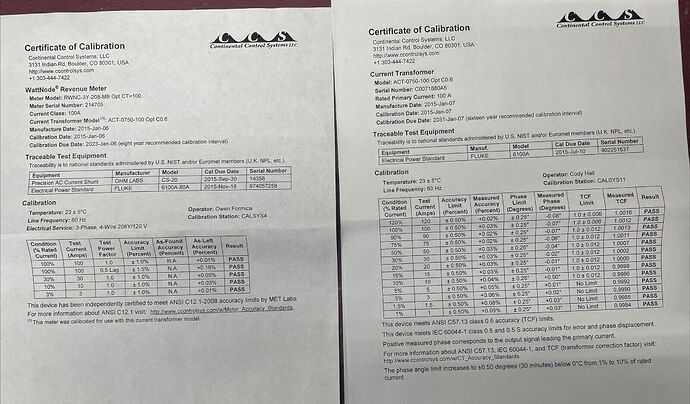I’m interested in getting an emonPi, but would like to modify it to have TWO AC sample voltage inputs.
I’ve run across some instances where there have been significant imbalances in the voltages on the incoming legs of the PoCo’s transformer.
In one case, a nearby house for sale was the culprit. The seller’s real estate agent stabbed a sign post through the underground line and severed the wire…
In another case, tree roots had grown under the concrete pad that the transformer rested on…
In the last case I noticed that the current imbalance between the legs was so great that the main breaker in the property had overheated on that side and had damaged contact points where it attached to the bus bar of the breaker panel.
All three instances occurred in properties that I own or otherwise take care of.
Case #1 was detected when half the house’s 110 volt electrical facilities worked and the other half did not. Turning on 220 volt items such as the water heater or stove caused some voltage to bleed over on to the failed leg and the failed facilities operated, albeit at a lower voltage.
Case #2 was similar to Case #1. In both cases, temporarily moving all breakers to all Odd or all Even positions in the breaker panel restored 110 volt service to the entire house. This, of course puts all the load on one leg of the PoCo’s transformer. They don’t like that too much. Breaker position was restored after the PoCo repaired their damaged wiring.
Case #3 is the exact opposite of 1 and 2. This property had all of its 110 volt loads already on one leg of the transformer. This imbalance, coupled with corrosion and a loose connection on that leg’s connection to the main breaker caused problems which burned the breaker where it attached to the bus bar of the breaker panel. This resulted in the loss of one leg to the property… Being that this was after the PoCo’s meter, it was the property owner’s (mine) responsibility to repair the damage.
After the scorching was cleaned off the bus bar and the main breaker was replaced, current readings were taken between the two legs and breakers were shuffled around to balance the load between the two legs.
Being that I’ve struck the lottery in being associated with several cases of voltage imbalance between legs, I’d like to monitor both current AND voltage on BOTH legs.
Can I modify an emonPi to have to 9 VAC inputs?

